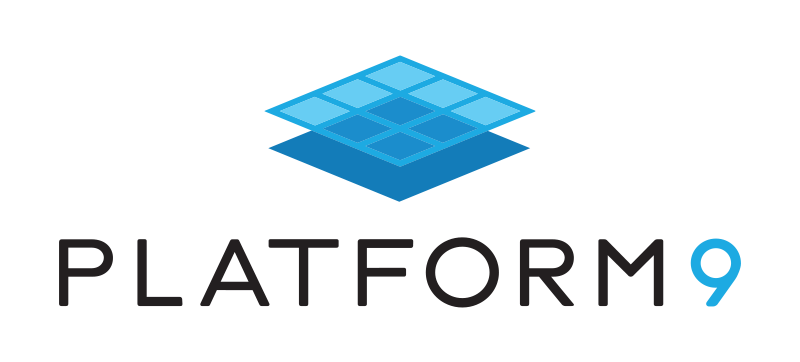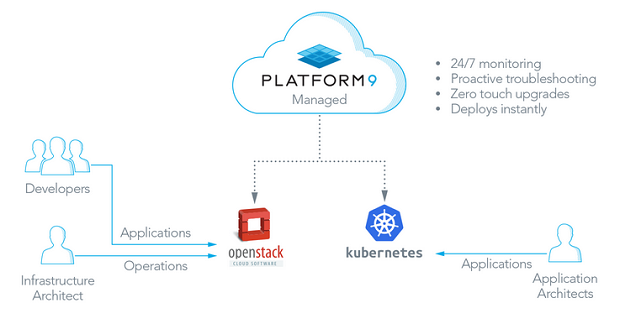* – This article has been archived and is no longer updated by our editorial team –
Platform9 offers a one-of-a-kind SaaS-managed hybrid cloud solution, enabling IT Operations teams to easily deploy and manage VMs, Containers and Serverless applications across any infrastructure – on premises and on public clouds.
Unlike DIY approaches or legacy cloud management solutions that require extensive investment in professional services implementation, Platform9’s unified hybrid cloud platform “just works” out of the box. By delivering the leading open source cloud frameworks — OpenStack for VMs, Kubernetes for Containers, and Fission for Serverless — as a managed service consumed in a SaaS console, Platform9 allows IT to simplify operations, reduce data center costs and accelerate their DevOps transformation with the only hybrid cloud that seamlessly works across any infrastructure and any technology stack.
To learn more about Platform9, we sat down with Sirish Raghuram, co-founder and CEO.

Q: Could you provide our readers with a brief introduction to Platform9?
A: Platform9 makes it easy to run hybrid clouds in the enterprise. The basic idea is that we deliver a comprehensive open source-based cloud platform that is provided as-a-service and that can easily overlay and integrate with any infrastructure that an enterprise is going to use, be that on-premises data centers, co-located infrastructure, or public clouds.
This approach gives you the simplicity and time to value of the public cloud, along with the flexibility, cost efficiency, and practicality of being able to deliver this self-service public cloud experience leveraging your existing infrastructure, anywhere – across on premises data centers and public clouds.

Q: Please explain how Platform9 helps enterprises solve challenges around hybrid cloud and managed Kubernetes.
A: If you think about hybrid cloud, I think the challenges are that very few companies have been able to make even a private cloud really work, let alone across hybrid infrastructure. By private cloud I mean a true private cloud, not just a VM, but managing on-premises infrastructure across environments to be consumed and operated in the same way as public cloud resources are [consumed]. By definition, you can’t have hybrid without either having a private cloud or a combination of multiple public clouds, and so very few organizations are running a true hybrid cloud today.
Despite the term “Hybrid Cloud” being around for 10 years as a mainstream concept, very few enterprises are actually able to run a hybrid cloud. That tells you just how challenging it has been. The founders of Platform9 all come from VMware, where we built a lot of the virtualization products, and had insights into the operational complexity that comes with running a truly hybrid cloud infrastructure – which is what we were seeking to solve, in a way that can easily be used by enterprises.
Since hybrid cloud is so difficult to run, there are essentially only three companies that have done a great job of running the cloud, and those are the big three public cloud providers: Amazon Web Services, Microsoft Azure, and Google Cloud. So the biggest way we help enterprises is that we bring that “secret sauce” and the capabilities of the public cloud leaders to their own data centers. We allow organizations to easily run their own hybrid cloud – bringing their own infrastructure and technology stacks under a unified management console, simplifying environment management and eliminating silos (without breaking the bank!) across hybrid workloads that can be running anywhere – on private or public clouds.
By delivering our solution as a SaaS-managed service, it enables organizations to be up and running in under one hour, with no professional services, custom integrations or management overhead – we ensure you see results immediately, and solve one of the biggest pain points of cloud adoption and of managing hybrid clouds and its related frameworks (OpenStack or Kubernetes) on-prem.
With Kubernetes, part of the challenge is a lot of enterprises are very new to the technology, and are trying to figure out how to containerize some of their existing applications or migrate more workloads to Kubernetes. Yet, Kubernetes is notoriously difficult to manage and operate – particularly on-prem, and at scale for mission critical workloads. There’s a massive learning curve to Kubernetes, and running it effectively is not easy, with all its moving parts the operational complexity, constant upgrades, etc.
So how do we help enterprises with that particular technology? I would say four ways:
• First and foremost, we make Kubernetes easy to use, and on your own infrastructure as well. You simply point the platform to any node you want us to manage and you’re up and running with a Kubernetes cluster running on it with a push of a button.
• In addition to our delightfully simple user experience, all the enterprise features are built in – such as SSO, backups, failover and HA clusters, automatic failure detection and auto healing, monitoring, and more – all backed by our 247x7x365 SLA. Lastly, we’re natively integrated with all the storage and network solutions that Kubernetes integrates with, so there are several integrations that are available out of the box that makes using Kubernetes a lot easier.
• Related to that, we eliminate a lot of the operational complexity around Kubernetes by delivering it as-a-service. So deploying Kubernetes, troubleshooting, monitoring for issues, upgrading to a newer version — all of these are things that could stall any enterprise Kubernetes initiative, and we eliminate these by delivering Kubernetes-as-a-service.
• Lastly, we provide a single pane of glass, a unified experience that can work across VMs, Kubernetes, and serverless. That ensures you have consistent management and visibility across all your technology stacks and all your environments.
Q: Tell us about how your customers are benefiting from working with Platform9 – any particular case study examples you want to share?
A: You could improve IT efficiency with Platform9 in a large number of ways, but broadly, you could do self-service provisioning of VMs or Kubernetes, automation of application deployment and blueprints, autoscaling, accelerate development with serverless applications, modernizing your existing infrastructure to enable cloud-native, and more.
One use case we see a lot is around empowering developers, enabling them to deliver value and innovation faster, and build more and more automation, all while reducing cost (and not succumbing to Shadow IT) and ensuring enterprise governance and control.
A leading provider of a photo management platform for consumers and businesses alike is using Platform9 for managed OpenStack and Kubernetes. One of their key uses cases was around Serverless with Fission.io. Fission allows them to run a Lambda-like serverless environment, but on their own data center infrastructure. This allows them to build their business applications a lot faster, scale them a lot more effectively, and automate a lot of the DevOps process. It also helps them modernize their applications and infrastructure, while still supporting their legacy backend, and not having to migrate all their insane workloads to a public cloud. In the past, it has caused them to throw away their investment in their existing data centers and risking cloud lock-in and having to incur the additional costs.
Related to that, a common use case we see a lot is around reducing data center cost and increasing IT efficiency and utilization. A majority of enterprises today already have considerable investments in on-prem data centers, and there’s no need to write off these investments, but rather find ways to better modernize these environments and better utilize and leverage their existing infrastructure.
For example, Cadence is using Platform9 to manage more than 40,000 cores across 12 data centers WW, and has seen +86% cost savings for VMware ELA and +70% increase in IT efficiency. Veritas achieved +30% faster time to market using Platform9 to manage their infrastructure for container-based application delivery; Autodesk achieved a unified cloud experience across 11 on-prem and on AWS, consolidated to one on-demand developer experience and self-service operations; a leading provider of process control/metrology in the semiconductor space saw improvement in data center utilization from just 19.3% to over 80% utilization, and more.
Q: What makes Platform9 different from other companies and competitors in your industry?
A: There are a few things that make us very different- we call it the SOUL of Platform9, and S-O-U-L is a good moniker for our most important differentiating factors: SaaS-managed, Open source, Unified experience, and the ability to Leverage existing infrastructure.
 Recommended: Redis Enterprise Delivers Performance, Reliability And Flexibility For Personalization, Machine Learning, And IoT
Recommended: Redis Enterprise Delivers Performance, Reliability And Flexibility For Personalization, Machine Learning, And IoT
Q: What is on the roadmap for Platform9 moving forward?
A: Our point of view is that we are in the very early stages of hybrid cloud and even cloud-native technologies. We think that there will be additional open source technologies, like Fission, which has been a huge success in the serverless ecosystem that will provide other innovative ways of running applications.
We certainly expect to innovate in other projects that will make it easier to build and run cloud-native applications on Kubernetes. We’d also expect to add more services to our portfolio of cloud technologies in addition to our support of Kubernetes, OpenStack, and Fission. We expect to add some data services as well as more technologies that make it easier for developers to build and run applications faster.
Activate Social Media:


 Recommended:
Recommended: 